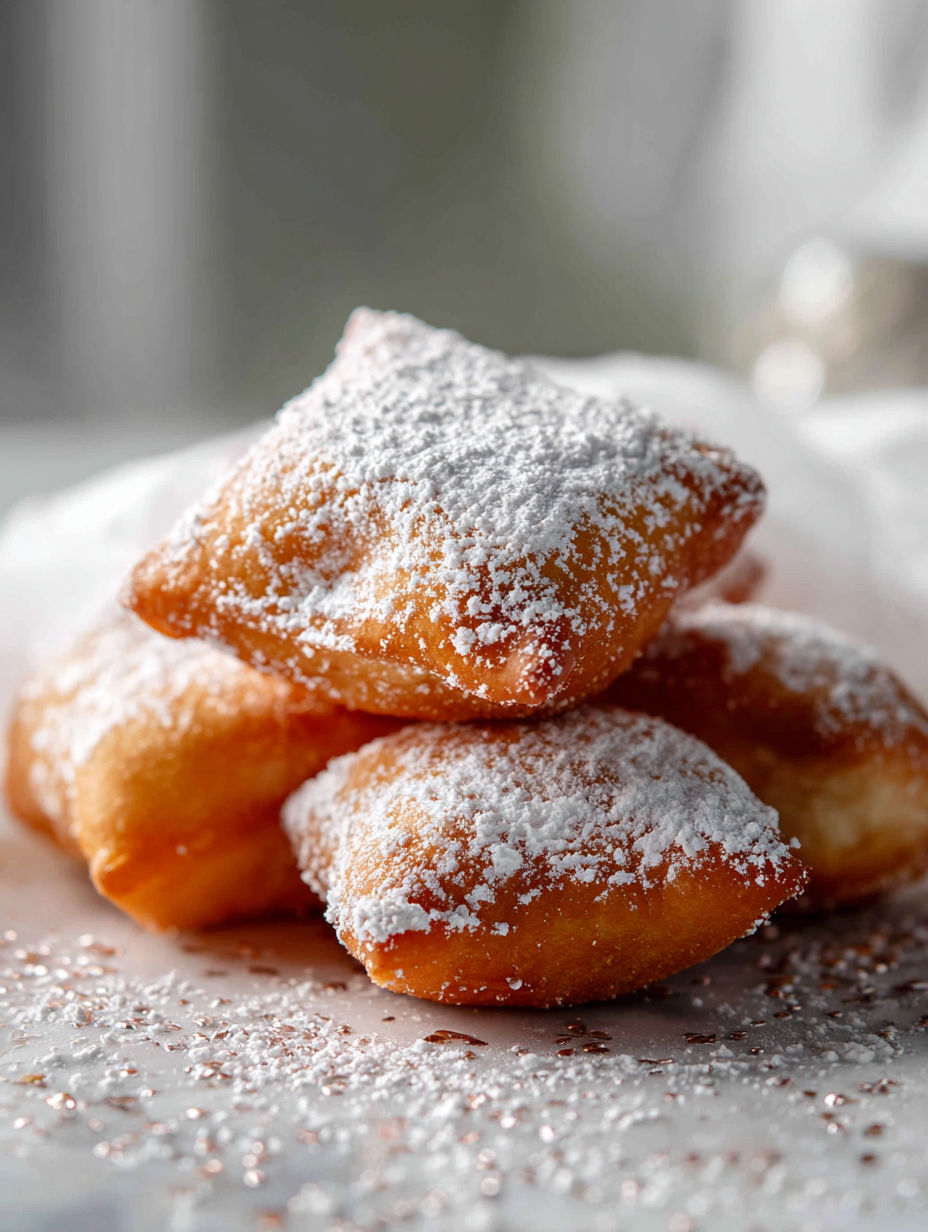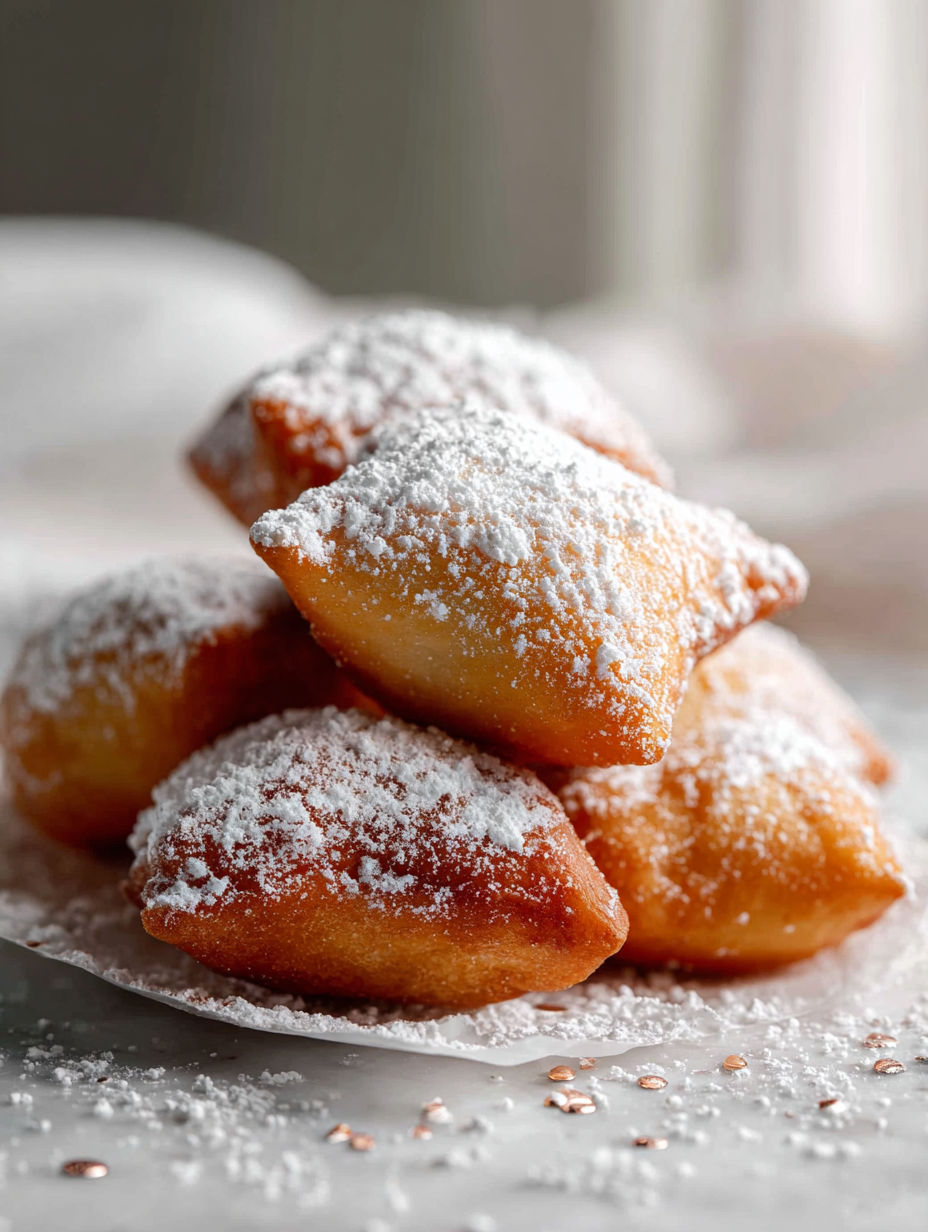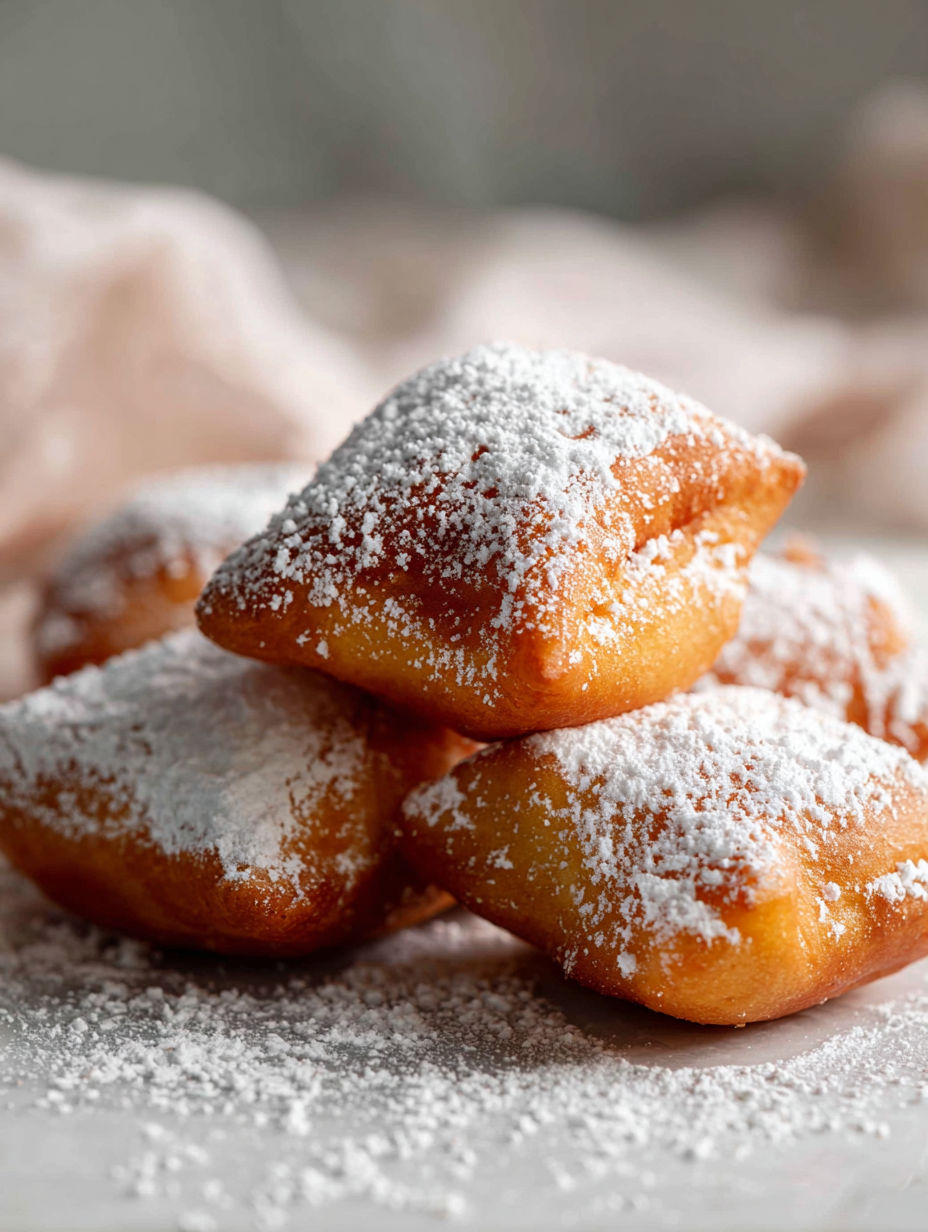 Save
Save
This recipe for classic New Orleans-style beignets brings a little bit of magic from 'The Princess and the Frog' right into your kitchen. These light and fluffy fried dough treats topped with powdered sugar are perfect for sharing on a relaxed weekend morning or when you want to impress guests with a homemade touch.
I tried this beignet recipe on a whim when craving something special, and it became an instant favorite for Sunday brunches. The dough feels just right when you handle it and watching the squares puff up in hot oil never gets old.
Ingredients
- Warm milk: helps activate the yeast for a fluffy texture. Use milk warmed to about body temperature so it does not kill the yeast.
- Granulated sugar: is split to first feed the yeast and then sweeten the dough. Use fine sugar that dissolves easily.
- Active dry yeast: creates the rise necessary for lightness. Fresh yeast works too but keep the quantity consistent.
- A room temperature egg: binds the dough for structure and moisture.
- Melted unsalted butter: adds richness and flavor. Use fresh butter with good aroma.
- Pure vanilla extract: gives a subtle aromatic sweetness. Opt for pure vanilla, not imitation, for best taste.
- Salt: balances the sweetness and enhances other flavors. Use fine salt for even distribution.
- All-purpose flour: is the base for the dough. Start with 2 3/4 cups but be ready to add up to 3 cups based on reactivity and humidity; fresh flour makes more tender beignets.
- Vegetable or peanut oil for frying: withstands high heat without imparting strong flavors.
- Powdered sugar: generously dusted adds classic finishing sweetness. Use freshly sifted powdered sugar to avoid clumps.
Instructions
- Build the Yeast Base:
- Whisk warm milk, 2 tablespoons of sugar and the dry active yeast in a bowl. Let the mixture sit undisturbed for at least 5 minutes until it becomes foamy and bubbly, signaling the yeast has activated and is ready to work.
- Mix the Dough Ingredients:
- Once bubbly, stir in the remaining sugar, the egg, melted butter, vanilla extract and salt. Make sure each ingredient is well incorporated for an even dough.
- Incorporate the Flour and Knead:
- Attach a dough hook to your mixer and gradually add the flour while mixing, or stir with a spoon if mixing by hand. Knead the dough for about 3 to 4 minutes until it starts to pull away from the bowl sides and becomes smooth and elastic but still slightly sticky. Add a sprinkle or two of flour if too wet, but resist adding too much to keep beignets tender.
- Let the Dough Rise:
- Cover the bowl loosely and leave the dough to rise at room temperature for at least 2 hours, or refrigerate overnight. This slow rise allows flavors to develop and the dough to double in size, yielding light airy beignets.
- Prepare the Oil:
- Pour oil about 2 inches deep into a heavy frying pan or Dutch oven. Heat over medium until reaching 350 degrees Fahrenheit. Use a thermometer to avoid oil that is too hot or too cool for even cooking.
- Shape the Beignets:
- Lightly flour a surface and scrape the dough out onto it using a rubber spatula. Flour the dough surface and a rolling pin then roll into a rectangle about ½ inch thick. Use a pizza cutter or sharp knife to cut into 1 to 2 inch squares for frying.
- Fry the Beignets:
- Carefully drop 4 to 5 squares into the hot oil. Fry for 2 to 2 ½ minutes, flipping halfway, until golden brown and puffed. If pieces do not puff, the oil is not hot enough. Drain on paper towels to remove excess oil.
- Serve Warm with Powdered Sugar:
- Let the beignets cool just a few minutes then generously dust with powdered sugar. Serve immediately for the best light and sweet experience.

I love how vanilla and warm butter come through softly in each bite. One family brunch we made these beignets and shared stories from New Orleans inspired by the movie, turning a simple breakfast into a fun tradition full of laughter and sweetness.
Storage Tips
Cool the beignets completely before storing in an airtight container at room temperature for up to 2 days. Reheat gently in a warm oven to restore crispness. Avoid refrigeration as it can dry them out quickly.
Ingredient Swaps
You can substitute milk with almond or oat milk for a dairy-free version but keep it warm for yeast activation. Butter can be replaced with coconut oil for subtle flavor change. Use active dry yeast or instant yeast interchangeably but adjust activation steps slightly.
Serving Ideas
Serve beignets with fresh fruit jams, dipping chocolate or a hot cup of coffee. For a savory twist, try dusting a small amount of cayenne alongside powdered sugar for a spicy sweet bite.

This classic beignet recipe captures the spirit of New Orleans and makes every bite a delightful experience.
Frequently Asked Recipe Questions
- → What makes these beignets light and fluffy?
The yeast activation and sufficient rising time allow the dough to develop air pockets, resulting in a light, airy texture when fried.
- → Can I use different oils for frying?
Vegetable or peanut oil works best due to their high smoke points, ensuring crispy beignets without burning.
- → How do I know when the oil is ready for frying?
Maintain the oil temperature around 350°F (175°C). Using a cooking thermometer helps keep the temperature steady for even cooking.
- → Why should the dough be slightly sticky before rising?
A slightly sticky dough ensures enough moisture and elasticity, which contributes to the tender, fluffy texture after frying.
- → What’s the best way to serve these beignets?
Cool them briefly after frying, then dust generously with powdered sugar. Serve warm for the best flavor and texture.
